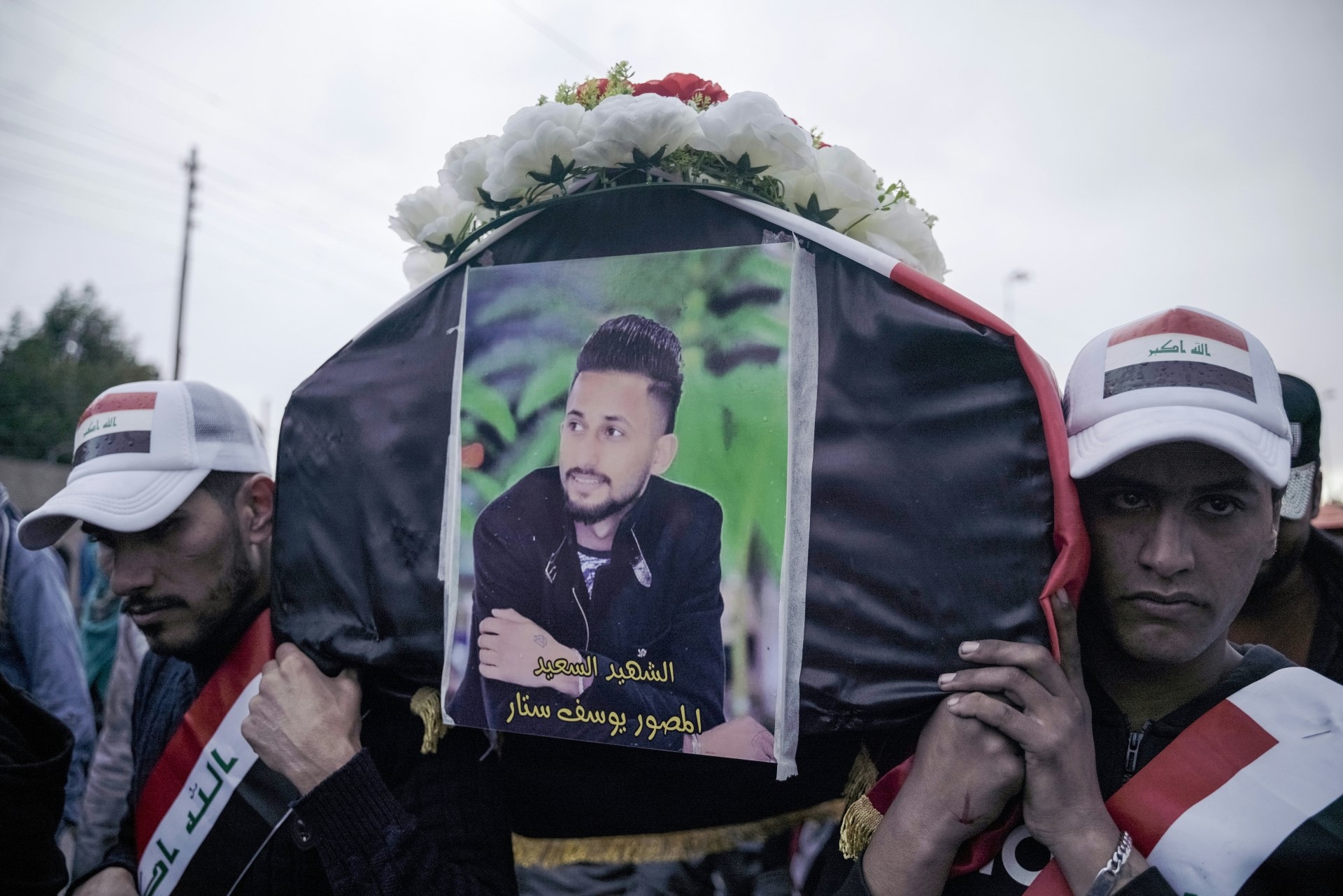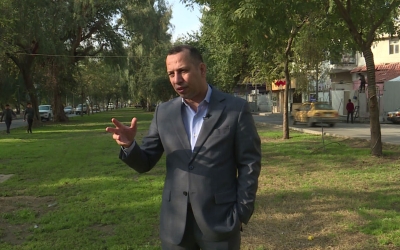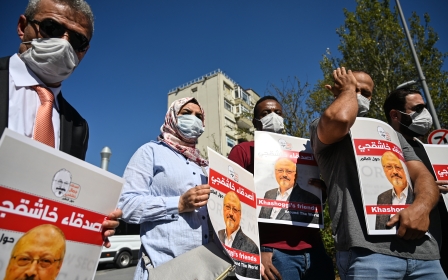Iraq world’s second-deadliest country for journalists in 2020, report finds

Iraq was the world’s second deadliest country for journalists in 2020, according to an annual report published by Reporters Without Borders (RSF) on Tuesday.
Fifty journalists were killed worldwide in connection with their work between 1 January and 15 December, marginally down from the 53 killed last year.
Mexico was the most dangerous country for journalists with eight killings, followed by Iraq (six), Afghanistan (five), Pakistan (four) and India (four).
“The world’s violence continues to be visited upon journalists,” RSF's secretary-general, Christophe Deloire, said.
'Some may think that journalists are just the victims of the risks of their profession, but journalists are increasingly targeted when they investigate or cover sensitive subjects'
- Christophe Deloire, RSF secretary-general
“Some may think that journalists are just the victims of the risks of their profession, but journalists are increasingly targeted when they investigate or cover sensitive subjects. What is being attacked is the right to be informed, which is everyone’s right.”
New MEE newsletter: Jerusalem Dispatch
Sign up to get the latest insights and analysis on Israel-Palestine, alongside Turkey Unpacked and other MEE newsletters
Eighty-four percent of the journalists were murdered or deliberately targeted, while 16 percent were killed while reporting.
The proportion is up from 63 percent who were targeted in 2019, and is likely due to a fall in reporters killed in war zones. In previous years, war-torn Syria and Yemen have featured prominently among the deadliest countries for media.
The Covid-19 pandemic has restricted journalists' access and movement.
Iraqi media targeted by gunmen
In Iraq, four of the six slain journalists in 2020 were killed while covering anti-government protests, which began in October last year.
Among them were Iraqi broadcaster Dijlah TV’s reporter Ahmad Abdelsamad and cameraman Safaa Ghali, who were fatally shot while covering demonstrations in the south-eastern city of Basra on 10 January.
Ten days later, photojournalist Youssef Sattar was shot in the head and killed while covering demonstrations in Baghdad.
Two Iraqi media workers were also assassinated near their homes in 2020.
Nizar Thanoun, the CEO of Al-Rasheed TV, was killed in February by unidentified gunmen who opened fire outside his home in Baghdad’s Al-Jamaa neighbourhood. He died at the scene, and the attackers fled on a motorcycle without a number plate.
In July, Iraqi analyst and researcher Hisham al-Hashemi was shot dead by gunmen who ambushed him outside his home in the Iraqi capital.
Hashemi had an in-depth knowledge of Iraqi affairs, particularly the workings of militant groups such as the Islamic State (IS) group. Friends and colleagues told MEE that he was “a man of conviction” who gave a voice to the voiceless in Iraq.
Iraq was ranked 162nd out of 180 in RSF’s 2020 World Press Freedom Index.
In October, a shadowy arrest warrant was issued in the country for Middle East Eye journalist Suadad al-Salhy over the vague charge of “defamation”.
Salhy has faced risks and threats before: in 2007 she escaped an assassination attempt, while explosive devices were discovered at the entrance of her parents' home in 2014.
RSF and the Committee to Protect Journalists (CPJ) called on Iraqi authorities to drop the charges against her immediately. The arrest warrant is yet to be quashed.
Journalist deaths in Iran, Egypt and Saudi Arabia
Elsewhere in the Middle East, Iranian journalist and former opposition figure Ruhollah Zam was cited in the report after he was executed by Tehran in December.
Zam had been granted political asylum in Paris, where he ran a website called Amadnews and a channel on the Telegram messaging app. He was reportedly “lured” back to Iran, where he was handed the death sentence for his involvement in anti-government protests in 2017.
In Egypt and Saudi Arabia, two journalists died after they had likely contracted Covid-19 while in prison.
Prominent Egyptian journalist Mohamed Monir died from Covid-19 just days after being released from Cairo’s Tora prison. He was arrested and detained after appearing on Al Jazeera’s news network, which Egypt labels as a mouthpiece for the outlawed Muslim Brotherhood.
Meanwhile, Saudi journalist Saleh al-Shehi died in July after his health deteriorated significantly weeks after being released from prison.
Shehi was a columnist for the newspaper al-Watan and frequently criticised the government's economic policies, corruption and the treatment of migrant workers.
He was sentenced to five years in prison for “insulting the royal court”, but was released after two years. Saudi authorities have released some prisoners over coronavirus concerns, though never publicly political ones.
Observers have noted “mysterious circumstances” around his release and death, and some have speculated that he may have contracted the virus.
Egypt and Saudi Arabia were among the worst jailers of journalists in 2020, according to two reports released earlier this month.
Middle East Eye delivers independent and unrivalled coverage and analysis of the Middle East, North Africa and beyond. To learn more about republishing this content and the associated fees, please fill out this form. More about MEE can be found here.






